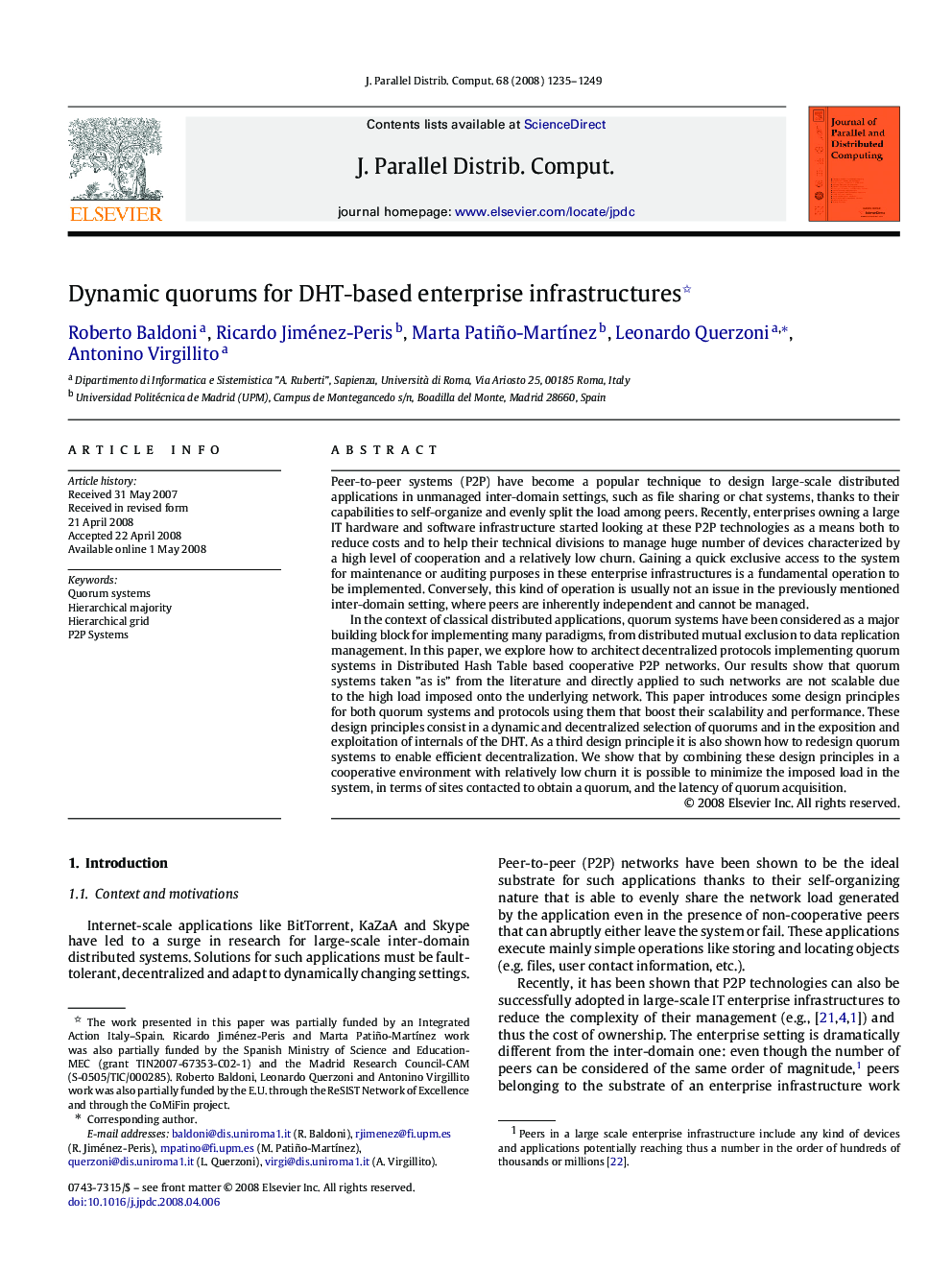| کد مقاله | کد نشریه | سال انتشار | مقاله انگلیسی | نسخه تمام متن |
|---|---|---|---|---|
| 433119 | 689251 | 2008 | 15 صفحه PDF | دانلود رایگان |

Peer-to-peer systems (P2P) have become a popular technique to design large-scale distributed applications in unmanaged inter-domain settings, such as file sharing or chat systems, thanks to their capabilities to self-organize and evenly split the load among peers. Recently, enterprises owning a large IT hardware and software infrastructure started looking at these P2P technologies as a means both to reduce costs and to help their technical divisions to manage huge number of devices characterized by a high level of cooperation and a relatively low churn. Gaining a quick exclusive access to the system for maintenance or auditing purposes in these enterprise infrastructures is a fundamental operation to be implemented. Conversely, this kind of operation is usually not an issue in the previously mentioned inter-domain setting, where peers are inherently independent and cannot be managed.In the context of classical distributed applications, quorum systems have been considered as a major building block for implementing many paradigms, from distributed mutual exclusion to data replication management. In this paper, we explore how to architect decentralized protocols implementing quorum systems in Distributed Hash Table based cooperative P2P networks. Our results show that quorum systems taken ”as is” from the literature and directly applied to such networks are not scalable due to the high load imposed onto the underlying network. This paper introduces some design principles for both quorum systems and protocols using them that boost their scalability and performance. These design principles consist in a dynamic and decentralized selection of quorums and in the exposition and exploitation of internals of the DHT. As a third design principle it is also shown how to redesign quorum systems to enable efficient decentralization. We show that by combining these design principles in a cooperative environment with relatively low churn it is possible to minimize the imposed load in the system, in terms of sites contacted to obtain a quorum, and the latency of quorum acquisition.
Journal: Journal of Parallel and Distributed Computing - Volume 68, Issue 9, September 2008, Pages 1235–1249